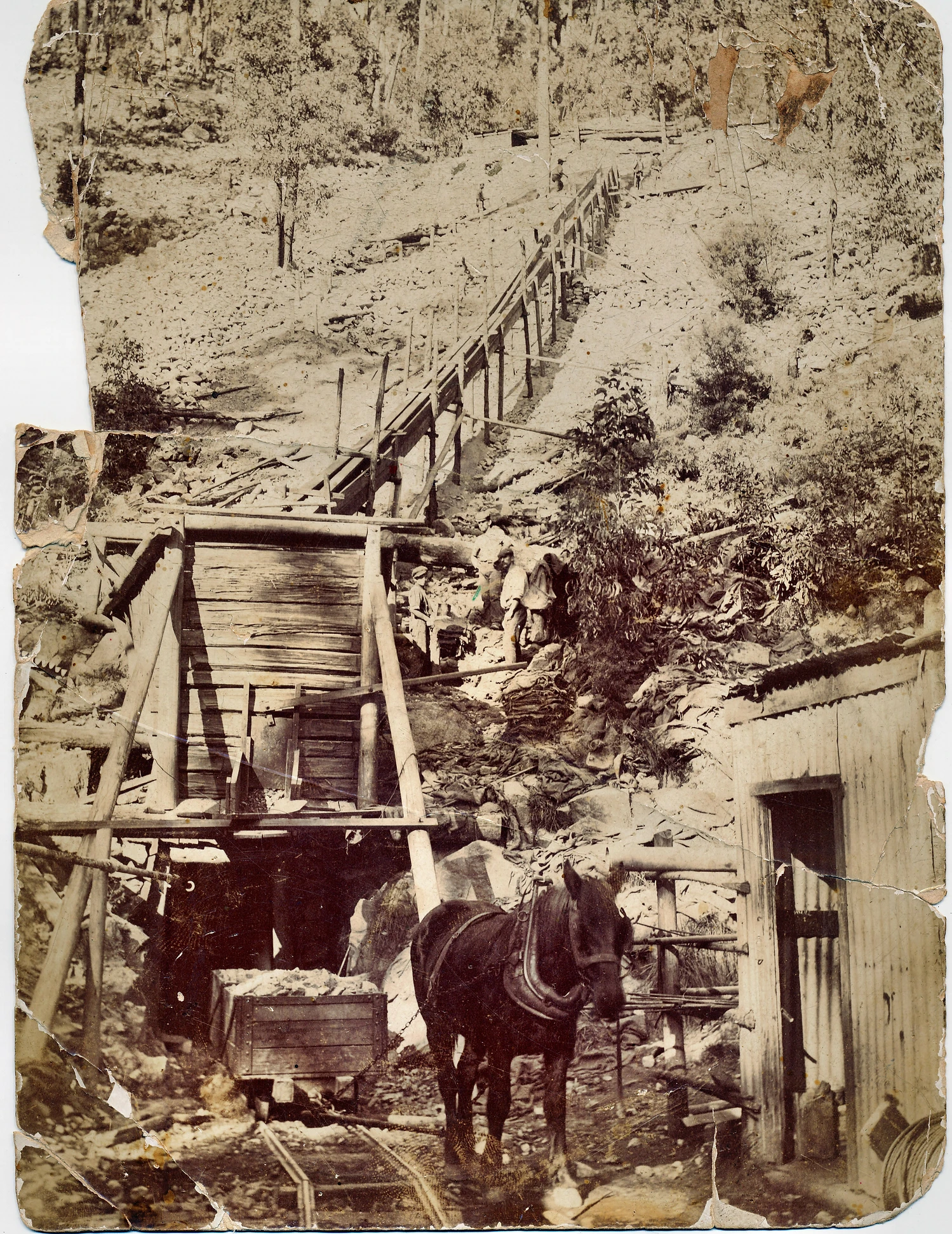Whipstick
The locality of Whipstick, 5 km east of Wyndham, was once a thriving settlement, based on the mining of gold, silver, bismuth and molybdenum. By 1892, Whipstick was a busy tent-town, with a few bush houses, two stores, a barber and a bi-weekly butcher’s shop.
The Great Jingera Pty Ltd Silver Mining Company mined bismuth and molybdenum for Sydney drug company Elliott Brothers and mining at Whipstick sustained the settlement there for almost forty years..
In response to the increased population at the settlement, the NSW Department of Public Instruction decided to establish a Public School at Whipstick and in October 1896, a call for tenders to construct of a school building there were advertised.
The tender of £63/11/9 from Mr. T. Waterson was accepted in November and by February 1897 the building was completed. Like so many others across the local district, Whipstick was a one-teacher school, consisting of a single large room with a fireplace for heating.
In March 1897, John Hanscombe was appointed as the first teacher at Whipstick school, with students being drawn from within the settlement and also the nearby localities of Honeysuckle and Six Mile Creek. Hanscombe remained as teacher until March 1908, with Henry Edward Matchett replacing him for a short while. Arthur Partridge became the third teacher at Whipstick school in August 1908, after Matchett was moved to Binalong in June.
In 1912 Whipstick was downgraded to a half-time school, sharing the Stoney Batter teacher and Arthur Partridge was moved to take charge of the school at Delegate.
Whipstick became a full-time school again in 1918 (provisionally), with Mr. A. Bunfield as teacher, closing again in 1922, reopening two years later, and again its opening was provisional.
A dispute in 1926, between several parents and the teacher at the Wyndham school, led to an increase in school enrolment at Whipstick, until 1928, when a new teacher arrived at Wyndham. Also in 1928, James Keith Howden was appointed teacher at Whipstick and he stayed until July 1929, when the school was finally closed permanently.
In 1904, Great Jingera Pty Ltd, had amalgamated with International Mines Ltd and operations at Whipstick ceased in 1909. Thomas Schafer and Herbert Robertson then commenced molybdenite, bismuth and gold mining there, the crushing battery being brought from the Treasury Gold Mine at Devils Hole, near the headwaters of Mataganah Creek. The mine's output was exported to Germany, until the outbreak of the War.
Although mining activity was in decline by the turn of the century, Whipstick was enjoying a resurgence by 1904, when it reportedly “...had taken a new lease of life in the locality ... with a ... well attended public school ...”, as well as two boarding houses and residences, ranging from miners’ bark huts to weatherboard cottages. Works peaked in around 1906, the same year that tenders were called for additions to the school building.
At Honeysuckle, James and Bridget Hickey ran a general store, at the former Honeysuckle Inn, catering for the Whipstick community. By 1920, most mining activities at Whipstick had ceased but in 1922, the Australian Tanning Extract and Bismuth Company began operating a wattle bark tannin extraction plant, for leather tanning. The plant continued operations until 1927, with Thomas Schafer as engineer and John Monck in charge of carpentry work.
In January 1929, a destructive bushfire tore through the area, razing almost everything in its path. A report noted that, “Driven by strong wind, the fire traveled on to Whipstick mines where every building, except the school house, was reduced to ashes. The wattle bark extraction plant, which had cost £30,000 to constuct, along with the dwellings of Messrs. Taylor, Jones, David Robertson, Thomas Jones, Charles Tasker and George Grant were also destroyed...”
Another account recorded that “At Whipstick, the homes of Messrs. Tom Schafer, Geo. Grant, T. Jones and L. Taylor, and the buildings and the £30,000 plant of the defunct Whipstick Wattle Bark Extract Co. were all destroyed. The school, slightly out of the line of fire, was the only building that escaped.” Not surprisingly though, with the little settlement itself wiped out and the mining industry all but finished, the school’s days were numbered. It finally closed down in July 1929.
Although the school building survived the 1929 inferno, its destruction would finally come in another blaze; the tragic bushfires of 1952, that caused so much death and destruction across the region. Today, all that remains to identify the school-site, are the remnants of the brick fireplace and chimney.
According to media reports, Whipstick was so named by the bullock drivers travelling through the spot: “The little township of Whipstick on the South Coast of NSW, once famous for its bismuth and molybdenite mines, received its name from the teamsters who used to camp there on the trip from Monaro to the seaboard with the Monaro wool clip. It was here that they cut their whip-handles for the place was famous for its young mountain ash, stringybark and she-oak trees. The teamsters called these young trees whipsticks.”

